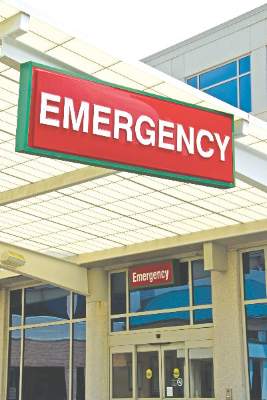User login
Age plays an influential role in the number of emergency department (ED) visits for mental health concerns among American Indian children, according to Wyatt J. Pickner and his associates.
The researchers analyzed 26,004 pediatric ED visits by 20,413 patients over a 12-month study period in the Upper Midwest. Among these, there were 1,545 visits (5.94%) by 1,287 patients for mental health reasons.
American Indian children had higher odds of having ED visits for mental health concerns, compared with white children (10.8% vs. 5.1%; P less than .0001), the researchers noted.
Visits by older American Indian children were more likely to be for mental health reasons, compared with younger children (P less than .0001). Within the 5- to 10-year-old group, these children had lower odds of a mental health visit (odds ratio, 0.40), while the 11- to 17-year-old American Indian children had higher odds of a mental health visit (OR, 1.62).
“Visits to the ED for mental health reasons by American Indian children are a complex problem and not fully understood,” the researchers concluded. “We believe our data can help to inform clinicians and policymakers on the appropriate resources and interventions that can be used to improve care for American Indian children.”
Read the study in The Journal of Pediatrics (doi: 10.1016/j.jpeds.2016.03.064).
Age plays an influential role in the number of emergency department (ED) visits for mental health concerns among American Indian children, according to Wyatt J. Pickner and his associates.
The researchers analyzed 26,004 pediatric ED visits by 20,413 patients over a 12-month study period in the Upper Midwest. Among these, there were 1,545 visits (5.94%) by 1,287 patients for mental health reasons.
American Indian children had higher odds of having ED visits for mental health concerns, compared with white children (10.8% vs. 5.1%; P less than .0001), the researchers noted.
Visits by older American Indian children were more likely to be for mental health reasons, compared with younger children (P less than .0001). Within the 5- to 10-year-old group, these children had lower odds of a mental health visit (odds ratio, 0.40), while the 11- to 17-year-old American Indian children had higher odds of a mental health visit (OR, 1.62).
“Visits to the ED for mental health reasons by American Indian children are a complex problem and not fully understood,” the researchers concluded. “We believe our data can help to inform clinicians and policymakers on the appropriate resources and interventions that can be used to improve care for American Indian children.”
Read the study in The Journal of Pediatrics (doi: 10.1016/j.jpeds.2016.03.064).
Age plays an influential role in the number of emergency department (ED) visits for mental health concerns among American Indian children, according to Wyatt J. Pickner and his associates.
The researchers analyzed 26,004 pediatric ED visits by 20,413 patients over a 12-month study period in the Upper Midwest. Among these, there were 1,545 visits (5.94%) by 1,287 patients for mental health reasons.
American Indian children had higher odds of having ED visits for mental health concerns, compared with white children (10.8% vs. 5.1%; P less than .0001), the researchers noted.
Visits by older American Indian children were more likely to be for mental health reasons, compared with younger children (P less than .0001). Within the 5- to 10-year-old group, these children had lower odds of a mental health visit (odds ratio, 0.40), while the 11- to 17-year-old American Indian children had higher odds of a mental health visit (OR, 1.62).
“Visits to the ED for mental health reasons by American Indian children are a complex problem and not fully understood,” the researchers concluded. “We believe our data can help to inform clinicians and policymakers on the appropriate resources and interventions that can be used to improve care for American Indian children.”
Read the study in The Journal of Pediatrics (doi: 10.1016/j.jpeds.2016.03.064).
FROM THE JOURNAL OF PEDIATRICS

